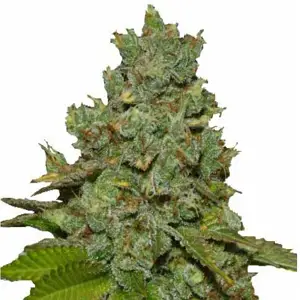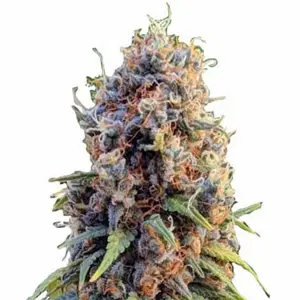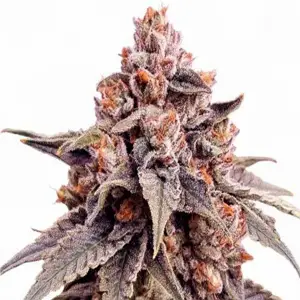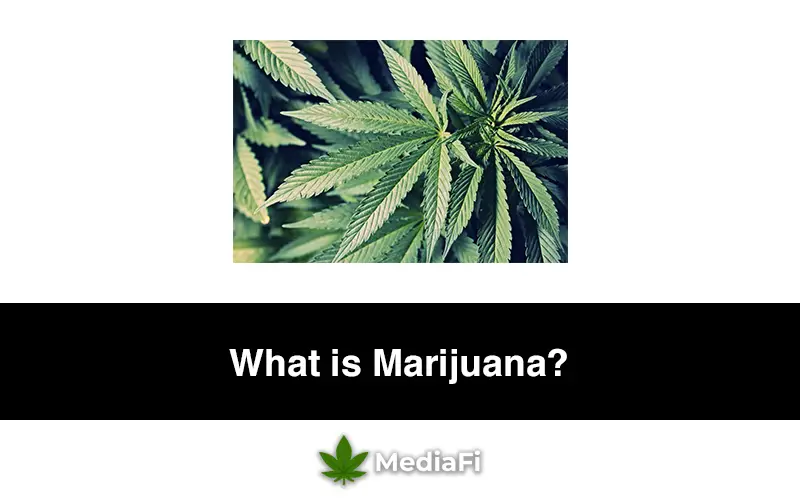Last Updated on January, 2024 by Rob Wilson
Marijuana, also known as weed, cannabis or ganja, depending on which part of the world you are smoking it at, is one of the oldest known psychoactive substances known to man. Humans have been smoking weed since time immemorial and this tradition continues into 2024 as the consumption of marijuana around the world continues to rise.
At a time when there’s a large-scale support for legalization of marijuana and many governments across the world have relaxed their laws restricting it, it becomes essential for everyone to know what this substance is – and the kind of effects it has on you. Over the course of this article, we take a closer look at what is marijuana and discuss everything that you want to know about it!
We start by addressing the most basic question of ‘What is Marijuana?”. That will be followed by a quick look at the history of weed cultivation and smoking all the way back from the ancient times to the modern day and age. We will then understand the effects that marijuana has on you along with a look at THC and CBD, which are the reasons as to why weed has the effect it has on you.
We then look at some social constructs which make smoking weed a taboo in today’s times, followed by a discussion on the legality of weed. Post that, we discuss the benefits and risks of smoking weed, followed by a quick look at understanding marijuana from a grower’s perspective and in the end, we answer some of the most frequently asked questions about marijuana.
We hope that this article becomes your complete guide to marijuana and tells you everything that you want to know about it!
If you are planning to grow marijuana for personal or commercial use, these are the best seeds currently on the market:
 |  |  |
|---|
What is Marijuana?
Marijuana is basically a mixture of crushed flowers of the cannabis plant. It is popularly consumed by smoking this mixture in hand-rolled cigarettes known as joints. Marijuana is commonly smoked by people for reasons which can be either medicinal or recreational (i.e. to get a ‘high’). The cannabis plant has psychoactive properties thanks to delta-9-tetrahydrocannabinol, popularly known as THC, which is the primary mind-altering chemical present in it. There are a number of ways in which it can be consumed and because of its intoxicating effect that it has on people, marijuanah as largely been regulated all over the world.
History of Marijuana: From the ancient times to 2020
The consumption of marijuana is something which has been practiced for thousands of years. Mentions of marijuana can be found in ancient Chinese texts dating back to 2700 BC and a number of Indian mythologies and ancient texts dating even further back in time also provide an account into the smoking of marijuana by various cultures. It has even been used in religious ceremonies and offered to the Gods in many cultures across the world. Some of the oldest books on medicine prescribed it as a naturally occurring medicine for various ailments including pain relief.
In the early days, marijuana was largely smoked in the Central Asian regions and the Indian subcontinent. From Central Asia and Persia, the use of marijuana reached the Arab world in the early 1000s. There are records of Hashish being smoked by the Egyptians in the 1200s. Over the next four centuries, weed travelled all over Africa and from the Western coast of Africa to South America where it was grown in Chile in the mid 1500s. From there it went to the US in over the next 100 years. In the late 1700s there are accounts of Napoleon smoking Hashish because alcohol was banned in Egypt. In the 1800s, marijuana went from India to England via the East India Company which was in control of the country and from there it truly went global.
Today, weed is consumed by millions of smokers all over the world to either just enjoy the high that they get out of it, or to get some relief from pain that they might be experiencing. While the laws around marijuana got very strict all over the world in the 1900s, the last decade has seen a global paradigm shift where medicinal properties of weed are being acknowledged by countries and laws about marijuana are being relaxed even for recreational use. Hopefully, the social stigma surrounding it shall also be relaxed in the years to follow – smoking marijuana is a practice which has been around for 4 millennia and is likely to be around for a really long time!
Effects of Marijuana
Understanding ‘What is Marijuana’ isn’t enough. One also needs to understand the effect that it has on the smokers. By and large, these are the effects that marijuana has on a consumer:
- The most basic effect that marijuana has on you is that it alters your senses. Some of your senses might get heightened during smoking marijuana and others might be reduced. The sense of time also gets altered and sometimes you might feel like a lot of time has passed but in reality it would have only been a few minutes or sometimes you might feel that no time has passed and it might have been a couple of hours. This also causes an increased reaction time amid stoners.
- Another very common effect of smoking marijuana is that it causes your heartbeat to increase. An accelerated heartbeat lasts for a long time in some smokers – going on even after they are no longer ‘high’.
- Hunger is one of the most common effects of marijuana on the human body. This is what is commonly called as ‘the munchies’ where you just want to stuff your mouth with food when you are high. Appetite is really stimulated by the smoking of marijuana.
- Another effect that Marijuana has on its smokers is the release of dopamine, which is primarily what gives you the feeling of a ‘happy high’. It is because of this increased release of dopamine that your senses also feel altered.
- However, while some effects are standard to all consumers of marijuana, it has different effects on different smokers – some people go through reduced levels of anxiety and stress and even feel that their symptoms of depression are reducing, there are others who claim that they are having the exact opposite effect – i.e. increased levels of stress and anxiety and increase in the symptoms of depression.
- Another common effect of marijuana on the human body is that of pain relief and reduction in nausea and vomiting. This is another big reason as to why people going through chemotherapy tend to make use of marijuana for medicinal purposes.
Understanding THC and CBD
In order to understand why marijuana has the kind of effects it has on your body, you need to understand THC and CBD which are the two primary elements, which are both naturally occurring compounds in the marijuana plant, due to which marijuana gets its psychoactive properties. Here’s a closer look at both of them:
- CBD
CBD stands for cannabidiol, and is not really the reason as to why weed is psychoactive. However, a number of other effects that weed has on you come from CBD. The compound is responsible for the medicinal properties of marijuana and is associated with effects such as pain relief, increasing the appetite, battling depression, anxiety and migraines. It also helps with psychosis and other mental disorders that someone might be going through. People suffering from glaucoma also find CBD helpful. Furthermore, CBD doesn’t really have any side-effects and has generally been known to be well tolerated by the human body even when consumed in high doses. However, when consumed with other medication, CBD might have side-effects which your doctor can tell you in detail about. While CBD exists in marijuana as well as hemp, hemp tends to have higher levels of CBD than marijuana.
- THC
THC stands for tetrahydrocannabinol and similar to CBD, it is also a naturally occurring compound found in the marijuana plant. Now while CBD doesn’t really give you the ‘high’ but has lots of medicinal properties, THC is the primary reason as to why you get ‘high’ on weed. THC can be consumed by directly smoking the weed or it can be consumed in the form of oil, tinctures, capsules, etc. When you smoke weed, the THC present in it binds with the cannabinoid 1 (CB1) receptors present in your brain which is why you get this altered sense of reality. THC also has some medicinal properties such as it helps with pain relief, insomnia, glaucoma, etc. However, there are a number of side-effects that THC has on the consumer such as a rising heart rate, dry mouth, increased reaction time, etc.
Why is Marijuana Considered a taboo?
Smoking marijuana has been a large part of the global culture for over a millennium but the last century has been one where restrictions and bans on the consumption of weed have started to emerge. This social taboo wasn’t really there in the past but over the years as marijuana started being classified as a ‘drug’ there has been a significant change in people’s attitudes towards it. The popular belief is that Marijuana has been seen not only as a ‘drug’, but as a gateway drug, which leads people towards substance abuse and makes them want to try out other drugs such as cocaine and heroin. However, this has been disproven by various theories over the years.
Ever since governments started classifying marijuana as a drug and started arresting those who were smoking weed, there has been a societal shift in the way we see marijuana smokers and over a century, people have begun to look down upon them as criminals. In the late 19th century, it was common to see a smoking parlours in the US and the UK where people would get together and smoke weed, just like how they would have some beers at a bar today.
Now that governments are relaxing their laws on marijuana, it has become legal in many parts of the US and in several countries across the world, but it is going to take quite a while before the attitude of the society at large changes towards those who smoke marijuana.
Legality of Marijuana
Marijuana used to be unregulated or legal till the early 1900s and there weren’t many laws governing it. Over the years laws around marijuana started getting strict and it started to get regulated and even got criminalized following the Ronald Regan administration’s war on drugs. A number of countries which were American allies also started supporting this and issued a ban on marijuana in their own countries.
However, with the changing times, the government’s attitude towards marijuana is getting rather relaxed and since the late 90s, a number of US states have allowed their citizens to smoke marijuana for medicinal purposes. A couple of decades later, the recreational consumption of marijuana has also been legalized by many states in the US. Globally speaking, there are some places such as Amsterdam which allow consumption of marijuana with minimal restrictions! Canada also has very relaxed laws when it comes to smoking marijuana. Other countries are slowly opening up to it and relaxing the laws.
Why does the law want to ban marijuana?
The ban on marijuana was issued because, as explained above, the law sees it as something that pushes the consumer towards other drugs such as cocaine and heroin. However, the pro-marijuana lobby has argued that if this is the case then alcohol should also be treated in a similar way and they also claim that smoking marijuana is less harmful than drinking alcohol. Over the years, law enforcement has had several people arrested and pending trial for a really long time because of marijuana possession which became a big issue of contention because the punishment was too severe for a crime that wasn’t really that big of a deal. This has been one of the biggest arguments towards decriminalizing marijuana in the US.
The ban on marijuana is also imposed because the government believes that smoking marijuana is going to impair the senses of the people and is likely to lead them towards danger. Driving while on marijuana is one such risk. However, the argument against this from the pro-marijuana lobby is again the same: this is similar to drunk driving, then why is alcohol still legal. With time, the attitude towards marijuana is getting favourable again and laws governing weed are softening up.
Benefits of Marijuana
Here’s a closer look at some of the benefits of smoking marijuana:
- Pain relief: Marijuana has numbing and calming effect on inflammations in the body and gives a great deal of relief from pain. It is also the numbing sensation of weed that smokers experience that enhances pain relief for those who are undergoing pain. This is primarily due to the CBD present in the weed.
- Medicinal properties: Weed has a number of medicinal properties as it provides relief from Glaucoma, nausea and vomiting, increased appetite (which solves a big problem for people undergoing chemotherapy) among many other things. Pain relief is another huge aspect of smoking marijuana.
- Free flowing thought and creative thinking: When you smoke weed, it alters the way you think. People begin to perceive new patterns and the entire thought process changes – allowing them to have out-of-the-box thoughts and enhances creative thinking. A number of musicians like to smoke weed while composing music because it allows them to think in a different manner, same is the case with artists from various other fields.
- Uplifts the mood: Another great benefit of marijuana is that it helps uplift the spirits in general. This is because it releases dopamine which is basically what makes you feel happy and eases out the stress levels.
- Good for mental ailments: Those going through mental health ailments such as depression, anxiety and psychosis are also known to get quite the relief by smoking marijuana. Smoking weed tends to have an overall calming effect on the smokers.
Risks of Smoking Marijuana
Now that you know what is marijuana and what are the benefits of consuming it, you must also know the risks associated with smoking weed:
- Cough and respiratory problems: Cough and lung irritation are some of the most common side effects associated with smoking marijuana. However, this can get rather complex and worrisome as it can develop into bronchitis over a long term and in some very rare cases it can even cause lung cancer.
- Increased heart rate: Increased heart rate is one of the most common symptoms associated with marijuana and it is not advisable for people with heart ailments to smoke weed (or to smoke anything at all).
- Delayed response time: This is another commonly occurring side effect of consuming weed – delayed response time. Basically, the time taken between a stimulus and the reaction would be longer, which means that it impairs your thought process for a while and it could be quite dangerous to drive during this time because you senses aren’t working as well. Moreover, it is also advisable to not make important decisions during this time.
- Short-term memory loss: Ever seen the popular depiction of stoners in the media? The phrase ‘i don’t know, man’, as popularized by Cheech and Chong over the years stems from the fact that stoners tend to forget things while they are under the effect of marijuana. Though this is a short-term memory loss, continued consumption of weed over a long term might have an impact on your memory in the long run.
- Might trigger anxiety and/or panic: While marijuana is generally known as a substance which helps reduce anxiety levels, there are chances that you might end up having a ‘bad trip’ which is pretty common among stoners who smoke impure varieties of marijuana and that ends up having an adverse effect on the brain, which might in turn trigger anxiety and panic in a person.
- Headache: The marijuana headache is a very common phenomenon among smokers. While you feel light-headed while you are under the effect of marijuana, once the effect wears off, some smokers tend to have a headache. This is particularly seen in those people who have consumed THC in the form of edibles.
- Withdrawal effects: Now this is a big topic of debate as most people who smoke marijuana will not face withdrawal symptoms because there is no dependency on marijuana like there is for other drugs – or at least that’s what the pro-marijuana lobby wants you to believe. However, while there is no chemical dependency on marijuana in the sense that your body doesn’t really need it, there can still be a mental dependency on weed, because sometimes your brain can convince itself that it works better while on weed. Hence, you might face some withdrawal effects like not feeling motivated enough, etc.
How is Marijuana Grown?
Knowing what is marijuana isn’t enough, you also need to have a fundamental understanding about how it is grown. Broadly speaking, marijuana can be grown in two ways: outdoors, like how it has been grown for thousands of years under the open skies, or indoors, which is relatively new method of growing marijuana under controlled environment where you are in charge of all the factors that affect the growth of the plant. Here’s a closer look at the outdoor as well as indoor growth of marijuana:
1. How to grow marijuana outdoors?
Growing marijuana outdoors is the traditional way in which it has been grown for thousands of years. When weed grows outdoors, it is basically growing under the open sky and is largely at the mercy of nature. September to October is usually the best time for weed to grow outdoors because of the day-night cycle being just perfect and the weather being neither too hot nor too cold, and it is also the time when it isn’t either too rainy or too snowy which makes sure that the plant gets everything in the right amount.
A marijuana plant requires sunlight, heat, water and air to grow properly. All of these things exist in nature and hence it can grow well with minimal supervision or even in the wild. The most level of human involvement can be the addition of fertilizers and preparing the soil. However, while it is a relatively cheap process where you don’t need to be involved much, growing marijuana outdoors comes with its own disadvantages. First off, you are leaving the plants at the mercy of nature: if the light isn’t enough or if the weather goes bad (too rainy or too snowy), the growth of the plants will be affected or they might just die off. Hence, there’s no guarantee that they will grow into fully flowering plants and you have very minimal control over the growth.
The level of control is the biggest differentiating factor between growing weed indoors and growing it outdoors.
2. How to grow marijuana indoors?
Growing marijuana indoors means that you will have to create an environment of optimal growth. Basically, you need to recreate the same environment as it exists outdoors. To provide light and heat, you are required to set up grow lights, water and nutrients will have to be provided manually and air can be provided via ventilation. However, growing indoors allows you to control certain finer aspects of growing marijuana as well:
When you grow your weed indoors, you can control the humidity levels – during the growth phase, plants require more humidity and during the flowering phase, they require a lesser amount of humidity – you can set up humidifiers and dehumidifiers to ensure an optimal environment is created. Moreover, when you grow weed outdoors, you’re not assured of how many hours of light you are going to get (you can have a fair idea or an estimate but cannot really be sure of it). However, when you grow weed indoors, you can set timers on your grow light and provide light at the right intensity by moving it closer or farther for the right amount of time!
Growing weed indoors has more advantages! You can provide the right levels of heat, ensure that pests do not hurt your plants, and you can also provide the plants with the right kind of care that they need. Light has another important role to play here: when you think your plants are ready for flowering, you can manually reduce the number of hours of light that they get which will prompt the plants to move into the flowering phase. It is because you can exercise such a great degree of control on your marijuana plants when you grow them indoors that a number of growers are now starting to prefer this way of growing their weed.
Lastly, there’s one more factor involved: while weed is being legalized across several states in the US and even internationally, it continues to be a social taboo and growers, therefore, prefer to grow their weed in the privacy of their homes rather than growing it out in the open where people can see them doing it. Moreover, growing weed in grow boxes or grow tents also fosters the growth process and ensures that the plants grow faster and that the yields are higher.
Recommended:
- Best Online Seeds Banks
- How to Choose the Best Seeds for Growing Marijuana?
- Growing Marijuana in an AeroGarden (Step by Step Guide)
- Countries with Legal Weed
- Best Potting Soil for Weed
- Best Canadian Seed Banks
Frequently Asked Questions: FAQs about Marijuana
By this point in the article, you must have gotten a fair idea about what is marijuana, what its effects, benefits and risks are, as well as the two different ways in which it is grown. Let us now take a closer look at some of the most frequently asked questions (FAQs) related to marijuana:
#1. Why is marijuana called ‘weed’?
Marijuana is known by different names all over the world. However, weed is the most common name by which it is addressed by most people. The word came to be because when you look at its natural existence, the marijuana plant grows by itself in nature and sometimes you might be going through some place and you can spot that growing in the ground. It is perhaps because of this that marijuana is popularly referred to as weed. The word ‘weed’ was first used as an alternative to ‘marijuana cigarettes’ back in the 1930s when it made its way into a newspaper. You can also see via Google trends that the word really picked popularity in the 90s and has now become the most popular slang term for marijuana. In fact, ‘weed’ is the word that has been used in several pop-culture songs as well as the commonly preferred word used by comedians and talk-show hosts making jokes on marijuana!
#2. What other names is marijuana known by?
While weed is the most common name by which marijuana is addressed, as established above, there are also a number of other slang terms by which people address marijuana. Not all of them have deep-rooted etymological explanations as to why marijuana is called by those names but here we go:
Marijuana is also known by the names of ‘weed’, ‘pot’, ‘reefer’, ‘ganja’, ‘Mary Jane’, ‘MJ’, etc. Sometimes, people might be referring to weed when talking about a ‘joint’ or a ‘drag’ or a ‘puff puff’ or a ‘blunt’. The word marijuana itself is a corruption of the original word ‘marihuana’ which is the way it is known in Spanish-speaking areas of the world.
#3. What is hemp?
Hemp, simply speaking, is a variety of the cannabis plant which has less than 0.3% of THC content. In the broader sense of the word, Hemp is basically any variety of the cannabis plant which does not have an intoxicating effect on the consumer. Hemp has found uses across various verticals such as food processing, making ropes, textile industry, paper, housing material, etc. In fact, the use of hemp for many of these things is not new as historical evidence suggests that hemp has been in use for almost 10,000 years!
#4. In what forms can I consume marijuana?
Marijuana can be consumed in various forms – the most common method is to smoke it up by rolling it in a joint. Some people tend to smoke it pure while others tend to mix it up with tobacco. Some people also prefer rolling their weed in a cigar wrap or a flavoured blunt which gives them a unique smoking experience along with an added flavour. A number of people prefer consuming it in the form of edibles where cookies and brownies can be baked using marijuana which give you a good high. Some people consume it in the form of marijuana oil while others prefer to smoke it up using different methods such as via a pipe, a chillum, or a bong.
#5. What is the difference between the high you get on marijuana vs the high you get on alcohol
The primary difference here is that while you get a ‘head high’ when you drink alcohol, you get a ‘body high’ when you are high on weed. Being high on alcohol does not open up your thought process or give you a sensory boost in a manner that weed does. Getting high on marijuana alters all your senses and gives you a very different experience. Moreover, the kind of high that you experience on alcohol is all-too familiar but getting high on weed is different depending on which strain of weed you are consuming.
#6. What are the medical properties of marijuana?
While marijuana in itself cannot be used as a medicine to cure ailments, but it is quite helpful for those undergoing treatments, particularly of diseases such as cancer and AIDS where patients tend to go through a lot of physical pain. Here are some of the medical properties of marijuana which have helped millions of patients from across the world:
- Provides relief from chronic pain
- Research from American Alliance for Medical Cannabis (AAMC) claims cannabis can help regulate blood sugar levels
- Cannabinoids present in the marijuana plant help fight cancer
- Those suffering from seizures feel relief after smoking weed
- Marijuana can also help calm mood swings in autistic people
- It allows those with ADHD/ADD to focus better
- It helps those suffering from Glaucoma as it reduces some pressure off the eyeball
- It helps those suffering from PTSD
- Marijuana is also good for those who are suffering from inflammatory bowel disease (IBD)
#7. Where can I buy marijuana from?
For generations, illegal marijuana has been sold in shady corners of the streets but with weed having been legalized now, you can simply buy it off a marijuana dispensary. If it is legal in the area that you live in, you can even order your weed online via certain apps that might have come up. You need to be at least 21 years or older in order to consume weed in the US. If you are requesting to consume marijuana for medical purposes you would need all the right prescriptions for that. Anytime you go to buy weed you will need to show a legal ID proof.
#8. How long does it take to get a ‘high’ from weed?
While it depends from person to person, if you are smoking a joint with only weed in it, it will take you about 2 to 3 good, long drags for you to start feeling the buzz. Give it some time and maybe add a little bit of music and some trippy visuals to that and you’d get high much faster – but it usually takes about 20 minutes for you to get ‘into the zone’. While some smokers tend to stop smoking once they get the first buzz, most usually keep on smoking so that the feeling of being ‘high’ can be increased.
#9. How long does a weed ‘high’ last?
The high that you get from weed can last you between 40 minutes to 2 hours depending on how much you’ve smoked and how potent was the ‘stuff’ that you were smoking. Smoking weed with high THC levels will give you a stronger and a long-lasting high. There’s no definite or objective answer to how long the effects of smoking weed will last.
Conclusion
We hope that this article on ‘What is Marijuana’ has helped you understand it better. Weed is no miracle drug – i.e. it cannot make you an all-knowing all-creative person, which is how it is often depicted in the popular media. However, marijuana is indeed something which has a number of benefits as well as some drawbacks. We hope that this article helped you analyze it in a proper manner and answered any questions that you might have had about marijuana. If there’s anything that we missed out, or if there’s anything more that you would like to know, do let us know in the comments or drop us a mail!
Top Marijuana Seeds – Check Price
Table of Contents


